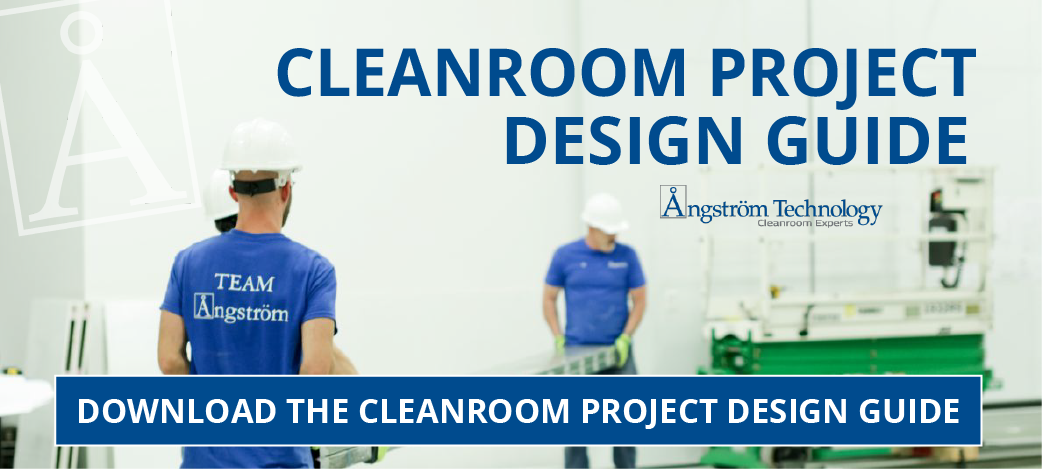When you’re commissioning a new cleanroom, it can feel like a necessary evil. You need a cleanroom to start operations, but it costs a lot of money that you might not have available in the budget at the time. It’s a bit of a Catch-22. At this point, you’re probably looking for anything that will get you the cleanroom you need in the time frame you have. Luckily, there are a variety of cleanroom design options that can solve some of the most common budget concerns. Here are a few cost-cutting design options to keep in mind when you’re looking for a cleanroom now:
Go Modular
One of the absolute quickest and easiest ways to save money on a cleanroom design is to opt for a modular cleanroom over a traditional cleanroom. In most cases, this is a perfectly valid solution, as modular cleanrooms can perform to almost all of the highest cleanroom standards. Additionally, modular cleanrooms can be modified to accommodate business expansions. And most importantly, they’re cheaper and quicker to build than your traditional cleanroom. When you opt for a modular cleanroom, you can get the cleanroom you can afford now without barring yourself from expanding to the larger cleanroom you really want in the future. If budget is an issue, modular cleanrooms are the way to save.
Make it Smaller
Sure, you want a cleanroom that’s big enough to handle the processes you plan on implementing in the future, but can you get by with something smaller for the time being? In the case of modular cleanrooms, there’s a lot you can do to get by with a smaller cleanroom. For example, you can use an existing wall and build your modular cleanroom off of that, which will reduce building and material costs. Remember, you can always build off of that existing cleanroom, or move it to a larger space down the road.
Additionally, by choosing a cleanroom design with a lower ceiling, you’ll also save money when it comes to energy and material costs. The smaller your cleanroom is, the less money it will cost to run it, and the less energy you’ll need to keep it to your ISO standard. If you can get by with a cleanroom with a lower ceiling and a more conservative size, and you need a cleanroom right now, then it’s not a bad idea to start small and expand later on. It’s good to note, though, that if you plan on expanding, to make sure you tell your cleanroom expert. They’ll be able to walk you through the best way to construct a cleanroom that works for you now, but will be compatible with additional processes when you do expand in the future.
Consider LED lighting
Cleanroom lighting makes up a large portion of the money spent on maintaining a cleanroom. Cleanrooms often require super-bright lighting options. While these lights are great at keeping the room well lit for employees, they’re often responsible for adding a surprising amount of additional heat to a cleanroom. This forces your AC unit to work even harder, which results in a spike in overall energy costs.
Today, there are a variety of LED cleanroom lighting options on the market that solve this problem. You can choose from a standard panel style to a strip style LED light that adheres to directly to the ceiling grid, without interfering with your cleanrooms’ laminar flow. LED lights produce little to no additional heat, and have an exceptionally long life, ensuring that you don’t have to constantly replace light bulbs and keeping your cleanroom cool.
Use your existing AC unit
Another great way to save money is to design a cleanroom that will function on your building’s existing HVAC or heating and cooling unit. This is an efficient way to control the temperature of your cleanroom, so long as your building’s unit can handle the extra load that your new cleanroom will add. Consult with your building’s heating and cooling expert to ensure the unit can handle that much energy, and if it can, you’re in luck!
It is good to note that some cleanroom class standards do require a cleanroom have its own AC module, in case the central unit fails. In this case, or in the case that your central unit is already overworked, you’ll need to ensure your cleanroom is properly ventilated to the outside. Though it’s usually cheaper to ventilate a cleanroom into the larger building, this puts a lot of additional stress on both your cleanrooms AC unit and the HVAC unit in the building. Avoid this if possible, to keep both units working in top condition for their intended lifespan.
Pre-Filters
We get a lot of questions from clients wondering if pre-filters are an acceptable option to use in conjunction with heavy duty HEPA and ULPA filters. The answer is definitely yes! Pre-filters are put in front of the larger filters and can be up to 80% efficient at capturing larger dust particles before they reach the HEPA and ULPA filters. This keeps your larger, more important filters cleaner for longer. Pre-filters are relatively inexpensive and easily cleaned and reused. By using pre-filters in addition to your HEPA or ULPA filters, you extend those more expensive filters’ lifetime and save yourself quite a bit of money.
Pass-Thru Chambers
Pass-thru chambers are another sneaky way to save money on your cleanroom. They’re a lot smaller than an access door, and they allow employees to transfer supplies or materials without having to gown up. This saves both money and time: money because in using a pass-thru chamber instead of a full door, you eliminate the possibility of contamination from foot-traffic and maintain a stable pressure during the interaction; and time because your employees won’t have to properly gown up to enter the cleanroom via the access door. In installing a pass-thru chamber as part of your new cleanroom design, you’ll save money by lowering energy costs and increasing employee productivity.
We hope that this list helps you find a cleanroom that works both for your application and your budget. If you have more questions regarding a cleanroom design that works for you, make sure to give the experts at Angstrom a call! We’re always here to help answer any cleanroom questions you can throw at us, so get in touch with our office at 888-768-6900, or request a cleanroom quote online today!



